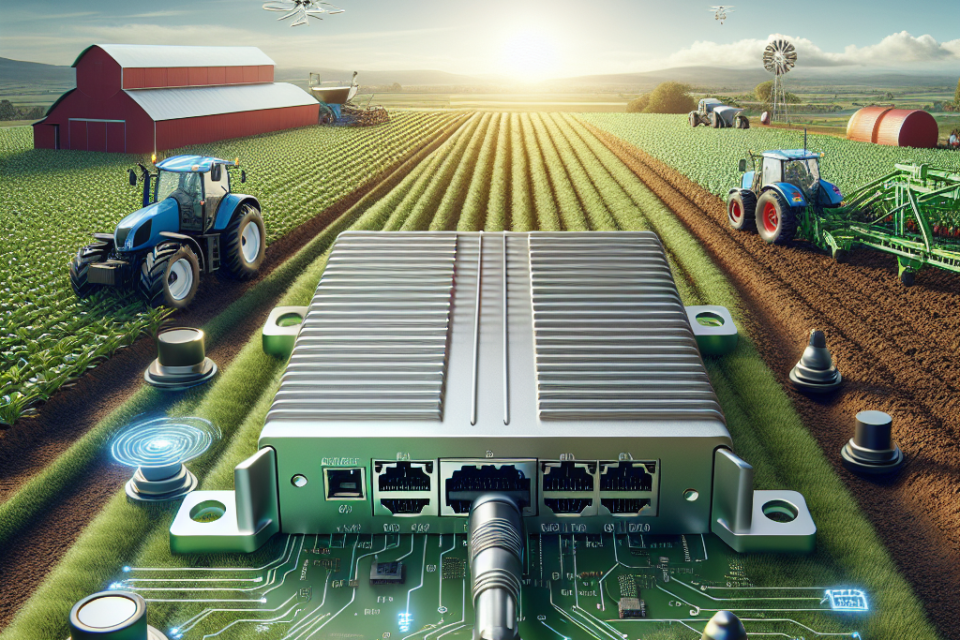How do you optimize a network adapter for agriculture technology (AgTech)?

Introduction
In today’s rapidly evolving agricultural landscape, the integration of technology—commonly known as Agriculture Technology (AgTech)—plays a crucial role in enhancing farm productivity and sustainability. One of the critical components that power AgTech solutions is the network adapter, which facilitates seamless communication and data transfer between various devices.
Optimizing network adapters is essential to ensure that the agriculture technology systems function efficiently and reliably. This article will delve into various strategies and best practices to optimize a network adapter for AgTech applications.
Importance of Network Optimization in AgTech
Before we dive into the optimization strategies, it is essential to understand the importance of network optimization in agriculture technology. The following table highlights some key points:
| Benefit | Description |
|---|---|
| Improved Connectivity | Ensures that sensors, devices, and machinery stay connected in remote locations. |
| Reduced Downtime | Minimizes interruptions in data transmission, leading to continuous monitoring and control of agricultural processes. |
| Enhanced Data Accuracy | Reliable connections ensure that data collected from the fields are accurate and timely. |
| Energy Efficiency | Optimized networks consume less power, which is crucial for battery-operated devices in the field. |
Best Practices for Optimizing Network Adapters in AgTech
1. Understanding Network Requirements
The first step in optimizing a network adapter is to understand the network requirements of your AgTech system. This involves:
- Bandwidth Requirements: Identify the amount of data that needs to be transferred and ensure the network adapter can handle the load.
- Latency Sensitivity: Determine the acceptable latency levels for real-time applications, such as automated machinery and irrigation systems.
- Range and Coverage: Assess the coverage area and the distance between devices to choose the right network adapter with sufficient range.
2. Choosing the Right Network Adapter
Selecting the appropriate network adapter is crucial for optimizing performance. Consider the following factors:
- Compatibility: Ensure the network adapter is compatible with the existing infrastructure and AgTech devices.
- Data Transfer Rate: Opt for adapters that support the required data transfer rates for your specific applications.
- Power Consumption: Choose energy-efficient adapters, especially for battery-powered field devices.
- Durability: Select adapters that can withstand harsh agricultural environments, including extreme temperatures and moisture.
3. Implementing Quality of Service (QoS)
Quality of Service (QoS) is a set of techniques to manage network resources by prioritizing specific types of data traffic. Implementing QoS can help optimize network adapter performance by:
- Bandwidth Allocation: Allocating sufficient bandwidth to critical AgTech applications ensures smooth operation.
- Latency Management: Prioritizing latency-sensitive data, such as real-time sensor readings, to minimize delays.
- Traffic Shaping: Controlling the flow of data to prevent network congestion.
4. Regular Firmware and Driver Updates
Keeping network adapters up to date with the latest firmware and driver updates is essential for optimal performance. Updates often include:
- Bug Fixes: Resolving issues that may affect network performance and stability.
- Performance Enhancements: Improving the efficiency and reliability of the network adapter.
- Security Patches: Addressing vulnerabilities to protect against cyber threats.
5. Network Segmentation
Network segmentation involves dividing a network into smaller segments to improve performance and security. For AgTech applications, this can be achieved by:
- Creating VLANs: Virtual LANs (VLANs) help segment the network into logical partitions, ensuring that critical data flows are isolated and prioritized.
- Using Subnets: Subnets can further segregate the network, reducing congestion and improving overall performance.
6. Monitoring and Analytics
Continuous monitoring and analytics are vital for maintaining optimal network performance. Implement the following practices:
- Real-Time Monitoring: Use network monitoring tools to track performance metrics and identify any issues promptly.
- Data Analytics: Analyze network data to understand traffic patterns and make informed decisions for optimization.
- Alerts and Notifications: Set up alerts for any unusual network activity or performance degradation.
7. Physical Placement of Network Adapters
The physical placement of network adapters can significantly impact their performance. Consider the following tips:
- Optimal Positioning: Place network adapters in locations that maximize signal strength and coverage.
- Avoid Interference: Keep adapters away from potential sources of interference, such as large metal objects and other electronic devices.
- Weather Protection: Ensure outdoor adapters are adequately protected from harsh weather conditions.
Conclusion
Optimizing network adapters for agriculture technology is a multi-faceted process that involves understanding network requirements, selecting the right equipment, implementing QoS, keeping firmware updated, segmenting the network, and continuous monitoring. By following these best practices, farmers and AgTech professionals can ensure that their network infrastructure supports efficient and reliable agricultural operations, leading to increased productivity and sustainability.
